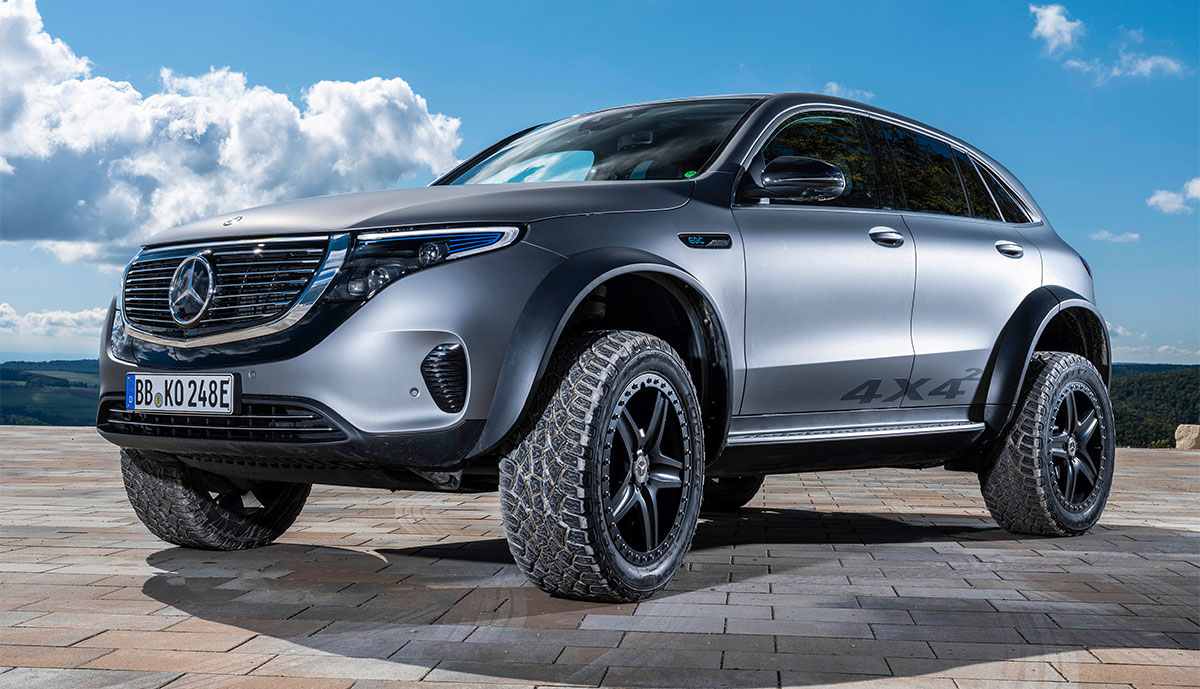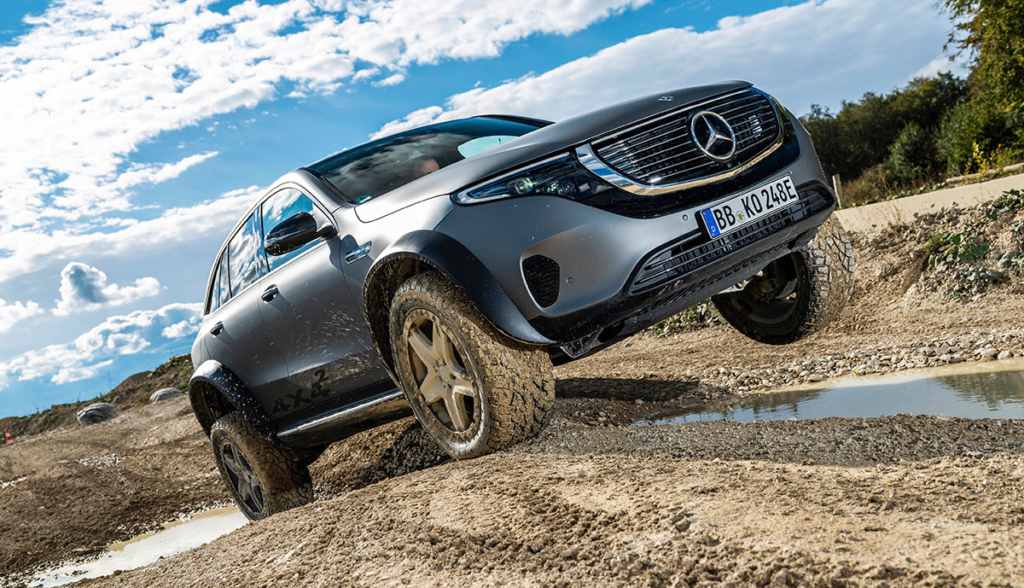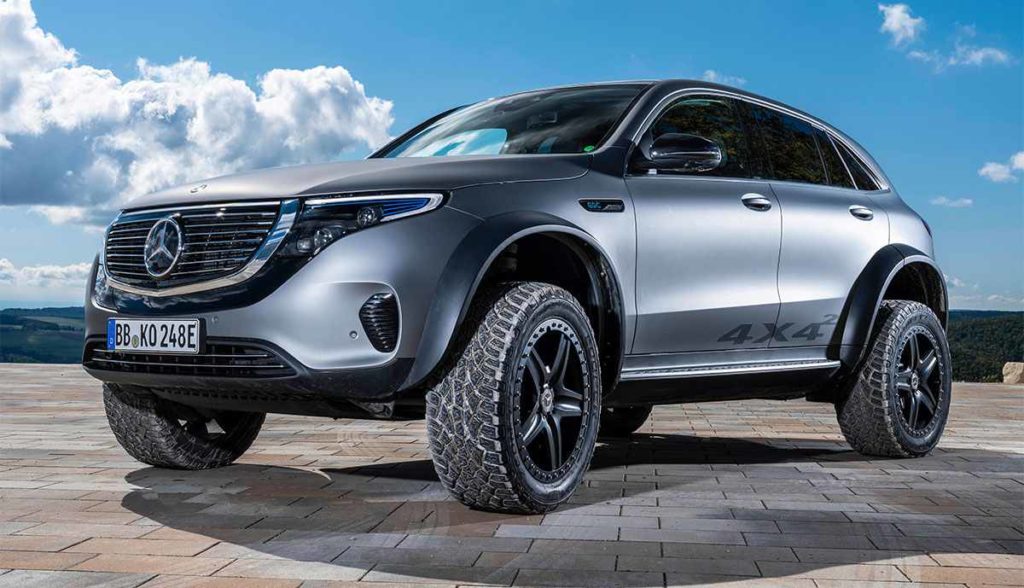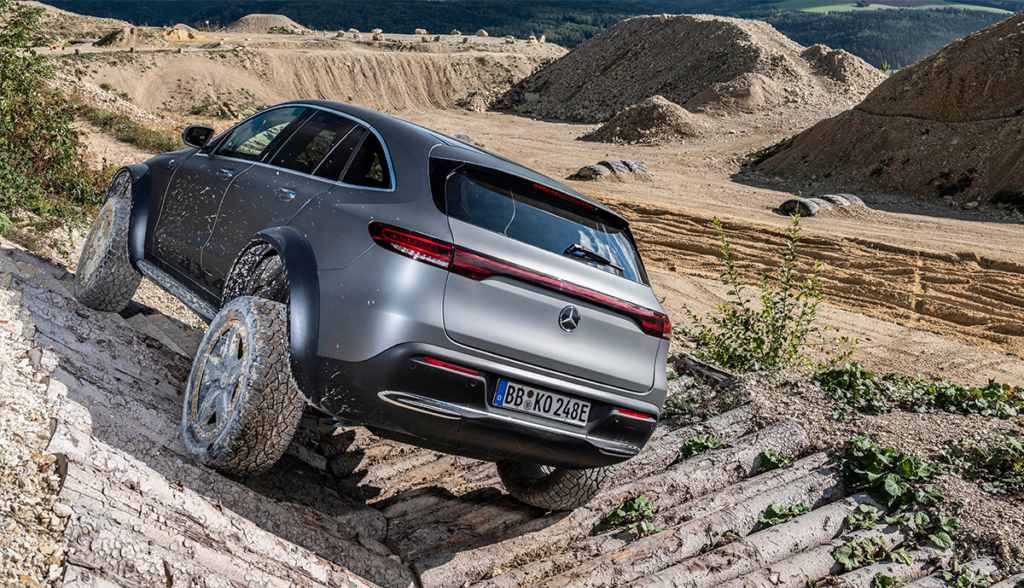Mercedes-Benz has introduced an offroad version of its EQC electric SUV. A model that has been transformed into a genuinely open-air proposal is destined to explore the limits and demonstrate that its electrification goes beyond paved roads.
Mechanically, it shares the same elements with the street EQC, with its 408 hp engine and its useful 80 kWh battery. They have made a series of modifications that allow it to enter the most complicated areas without problems.
The EQC 4X4 has a ground clearance of 293 millimeters, more than double that of a standard EQC that stands at 140mm. Even the mythical G-Class is 58 millimeters lower. The wading depth increases from 15 centimeters to 40 centimeters so that the client can cross streams more easily.
The high ground clearance is possible thanks to the conversion to gantry axles. Unlike conventional axles, the wheel centers are not at the same level as the center but are much lower due to the gantry’s gears. The 4×4 chassis is connected to the same mounting points on the body as the series chassis.
The lean angles of the EQC 4×4² are 31.8 degrees at the front and 33 degrees at the rear. For comparison: a conventional G-Class has an approach angle of 28 degrees.
Another of the protagonists of this preparation is the huge tires, 285/50 R20 rubbers, which allow you to enjoy a greater capacity on difficult terrain, adding an appearance of “baddie,” which is also helped by the matte color which they have painted this model.
Mercedes also highlights the sound experience as another highlight of the EQC 4×4². According to Mercedes, “The acoustic staging includes sounds that give feedback to the driver when the system is ready and when the vehicle is parked, as well as an interactive and “emotional” driving sound. This is influenced by various parameters such as accelerator pedal position, speed, or recovery. Sounds are calculated in real-time in the sound system’s amplifier and reproduced by the speakers inside.”
“Our goal is to harmonize contemporary luxury, sustainability, and emotionality. The EQC 4 × 4² shows how much fun sustainable mobility can be.”
What they have not discussed is how these modifications will affect the performance of the EQC 4×4 in aspects such as autonomy. In its conventional version, it is not an incredibly efficient model, with an average consumption of 21.3 kWh per 60mph and autonomy under 242 miles, which in the real autonomy tests was placed in the actual 194 miles 100% to 0%. Figures that indicate that very possibly we are talking in the case of the 4×4 of a real autonomy that will reach 155 miles. In practice, we will not be able to go off-road too far from home or a charging station.




